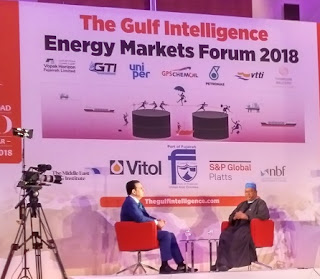The Oilholic finds himself in the financial hub of Zurich, Switzerland for a splash and dash trip and afterhours ‘crude’ banter here suggests oil bulls are being cautious ahead of the 30 November OPEC and non-OPEC oil ministers’ meeting.
Market anticipation that the ongoing 1.8 million barrels per day (bpd) production cuts would be rolled over beyond March 2018 has sent the Brent front month contract well north of the $60 per barrel mark. As yours truly was boarding his flight out of London, Brent was trading at $60.73 per barrel and heading higher, notching its highest level since July 2015 and marking a rise of more than 36% from the lows seen in June. Some are quite excited.
Take Paul Mumford, fund manager at Cavendish Asset Management, for instance. He notes: “With each dollar trickling straight through to the bottom line, if prices remain at these levels we’d see a rapid increase in oil firms’ cash flows – something that could mean a significant shake up. Asset values would increase sharply in line with projected earnings, banks would be more relaxed about borrowings and farm-out agreements would become easier and more lucrative.
“The lives of mature fields may be extended deferring steep decommissioning costs, exploration would become increasingly viable, and project financing should be easier to obtain. Higher prices could also be an incentive for consolidation in the industry. The downside however might be that we see an increase in drilling costs, but this would benefit the oil service companies. There is every reason to have confidence in the oil market – $50 a barrel and below is a struggle, $55 is good and $60 and above means cigars for everyone!"
Be that as it may, oil market observers in Zurich, and the few who kindly made their way from Geneva to speak to the Oilholic, say the situation warrants caution.
Spot Brent lags a good $3-plus per barrel. And while it’s all good to go long based on the daily newsflow in the run-up to the OPEC meeting, the absence of an exit strategy by those partaking in the production remains a big question-mark.
If the cuts are rolled over – as is appearing increasingly likely – folks here in Zurich opine, and the Oilholic concurs, that the bears would only be going into hibernation for a limited time. The cuts have to end at some point.
Away, from the oil price,
MarketLine’s latest industry assessment released last week, suggests the global oil & gas market shrank by 13.6% in 2016 as low crude oil prices pushed down revenues. Overall, the global oil & gas market saw its value fall from $1,395.7 billion in 2015 to $1,205.6 billion in 2016.
The research outfit’s latest forecasts predict a market value of $1,624.7 billion over the period 2016 – 2021; coming to a Compound Annual Growth Rate (CAGR) of 6.1%. Volume growth during the same period is forecast at 1.6% reaching a total consumption of 52,619.8 million barrels of oil equivalent.
The MarketLine report also highlights that the US oil & gas market is the largest domestic oil & gas market in the world, with a total value of $286 billion in 2016. This means that the US market alone accounts for almost 24% of the global oil & gas market.
Those shale players haven’t gone away. If higher prices benefit OPEC, US independents prosper too. Question here in Zurich and beyond is what happens when more barrels – both OPEC and non-OPEC – start hitting the market? Fondue for thought indeed, but that’s all from Switzerland folks! Keep reading, keep it ‘crude’!
© Gaurav Sharma 2017. Photo: Zurich, Switzerland © Gaurav Sharma 2017.








